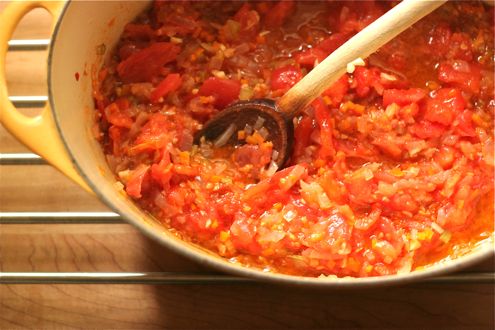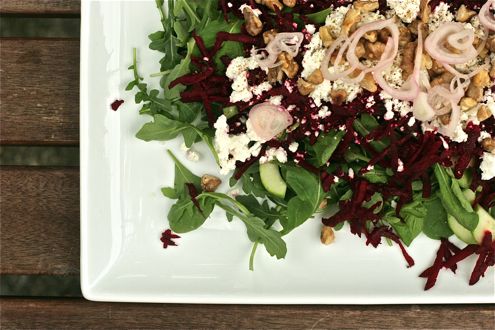 I don’t know what happened. Or rather, it happened so suddenly. Like exotic mushrooms suddenly sprouting up in the gloom of a damp, dark forest.
I don’t know what happened. Or rather, it happened so suddenly. Like exotic mushrooms suddenly sprouting up in the gloom of a damp, dark forest.
I have been nonplussed with the restaurants in Seattle since we moved here seven years ago. There was too much money in them – the interiors, the ingredients, the clientele. To me, they all looked like they were trying too hard. Now all of a sudden, there are so many restaurants to love – where did they all come from?! I probably missed them as I was raising little kids. Now that my three are a bit bigger I can pay attention to what’s going on out there.
It started last fall when I finally visited the Corson Building. Rustic, very rustic. I’m calling it run-down palazzo chic – whatever that means – with edgy neo-Northwest Mediterranean food. If you have a chance to go, you’ll see what I mean. Then, Sitka and Spruce in their latest incarnation on Melrose. Turn of the century, romantic industrial interiors with riffy Northwest-inflected, Middle Eastern food. That one might be my favorite. But then there’s Spur! Also local ingredients but with that sous-vide spin. It’s still forthright Northwest food though, because this is Seattle. And it totally works. Finally, I went to Revel for lunch on Monday and despite a dire (and I mean dire) dessert, the Korean-inflected meal straddled comfort food and spring seasonality and all I wanted was more, more, more! I think our waiter was stunned and (dare I say?) impressed with all that my friend Christine and I managed to eat.
Anyway, I love it in a restaurant when there’s this sense that the chef is throwing down the gauntlet, saying: Here is what I know about living here in this moist, dark part of the world and this is what I have to say about it. At Sitka and Spruce, for instance, the food hovers between the briny sea life of the Sound and the fertile plains of eastern Washington. I love the deliberate, thoughtful, local-ness of the ingredients, but it doesn’t stop there. The chef dallies with dukkah, with harissa, with stinging nettles and pickled lady fern. And that‘s the sweet spot for me. I get home from a dinner like that and I want to try making food that way; employing local ingredients and spinning them into another faraway culture. Even if it just means I’m barely more than copying. That’s okay with me.
A couple of months ago I wrote about that clam and black rice dish I tried to make from the menu at Sitka and Spruce. Instead of clams I used halibut, which was finally making it’s first appearance of the spring. I wanted to write out how I did it, but I was intent on writing about aioli first. Well, I guess I made le Grand Aioli already so that recipe is already done. Now this dish will be supremely easy. Fifteen minutes of work; dinner on the table in less than an hour. Hooray.

Grilled halibut, black rice, aioli & cilantro
(inspired by the clams in a similar preparation at Sitka and Spruce)
- 2 lbs halibut filet, skin removed by fish monger (halibut skin is notoriously difficult to remove)
- kosher sea salt and freshly ground black pepper
- 1 1/2 cups black rice
- 3 cups water
- 1 tbsp extra-virgin olive oil
- 1 recipe aioli
- 3 cups cilantro, washed and dried, with tough stems removed
- 1 lemon, cut into wedges
- In a medium sized, heavy bottomed sauce pan, bring the water, rice and 1/2 tsp of salt to a boil. As soon as it reaches the boil, put on the lid, turn down the heat to low or until it just simmers . Set the timer for 50 minutes.
- Light the coals on your grill, or preheat a gas grill on high.
- Lightly season the halibut with sea salt and pepper and brush both sides with olive oil.
- When there are just 10 minutes left on the rice, start to grill the halibut. With a thin metal spatula, carefully turn the fish after 4 or 5 minutes. If it falls apart, don’t worry! It will all get covered by the cilantro anyway. Grill for another 4-5 minutes. When fish is just opaque in the middle it is done. Remove to a clean plate.
- Give the rice a stir and then heap onto a large platter. With a spoon drizzle a few tablespoons of aioli over the rice. Lay the halibut fillets on top and drizzle over a few more tablespoons of the aioli. Strew the cilantro over the top. Garnish with lemon.
Serve with a bunch of asparagus, tossed in olive oil, salt and pepper and grilled. Everyone will be happy. This dinner manages to be both effortless and complex. Halibut is so delicately rich in contrast with the darkly earthy rice. The cilantro and aioli were jewel-like in comparison. Even my fish-phobic 11 year old was begging for seconds.





























